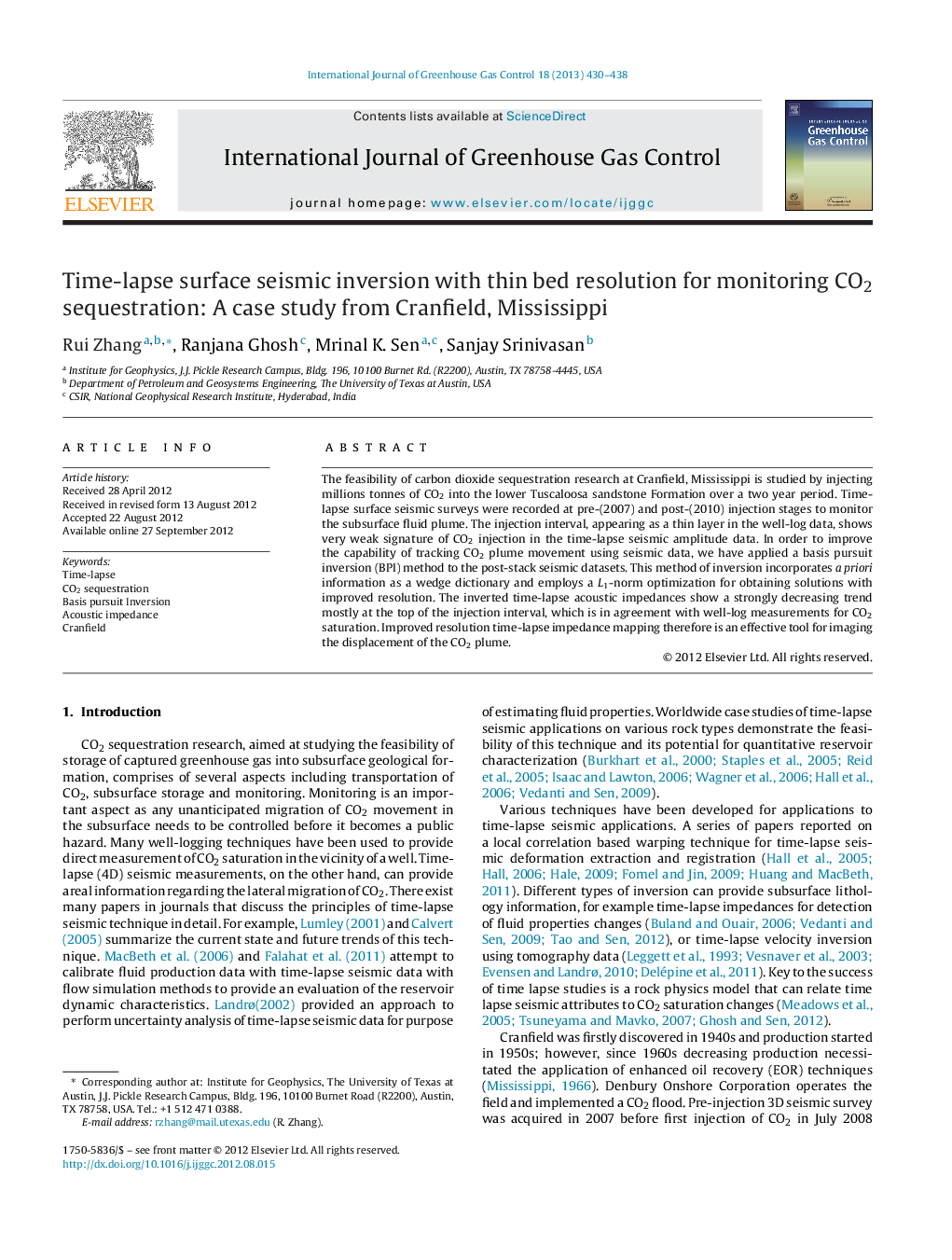| کد مقاله | کد نشریه | سال انتشار | مقاله انگلیسی | نسخه تمام متن |
|---|---|---|---|---|
| 1743182 | 1522003 | 2013 | 9 صفحه PDF | دانلود رایگان |

The feasibility of carbon dioxide sequestration research at Cranfield, Mississippi is studied by injecting millions tonnes of CO2 into the lower Tuscaloosa sandstone Formation over a two year period. Time-lapse surface seismic surveys were recorded at pre-(2007) and post-(2010) injection stages to monitor the subsurface fluid plume. The injection interval, appearing as a thin layer in the well-log data, shows very weak signature of CO2 injection in the time-lapse seismic amplitude data. In order to improve the capability of tracking CO2 plume movement using seismic data, we have applied a basis pursuit inversion (BPI) method to the post-stack seismic datasets. This method of inversion incorporates a priori information as a wedge dictionary and employs a L1-norm optimization for obtaining solutions with improved resolution. The inverted time-lapse acoustic impedances show a strongly decreasing trend mostly at the top of the injection interval, which is in agreement with well-log measurements for CO2 saturation. Improved resolution time-lapse impedance mapping therefore is an effective tool for imaging the displacement of the CO2 plume.
► Time-lapse seismic shows weak CO2 signature at Cranfield datasets.
► BPI derived acoustic impedances show improved resolution.
► CO2 caused Impedance decreases mostly occur at the top of the injection interval.
► The strong impedance decreases mostly occur around injection wells locations.
Journal: International Journal of Greenhouse Gas Control - Volume 18, October 2013, Pages 430–438